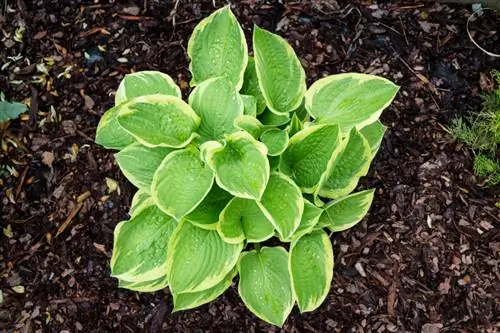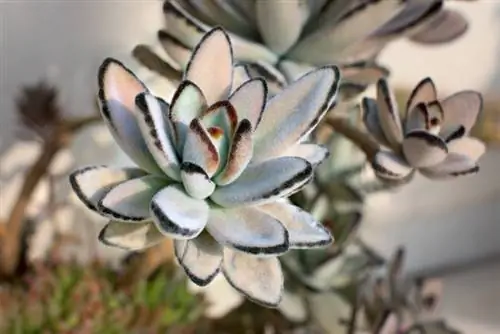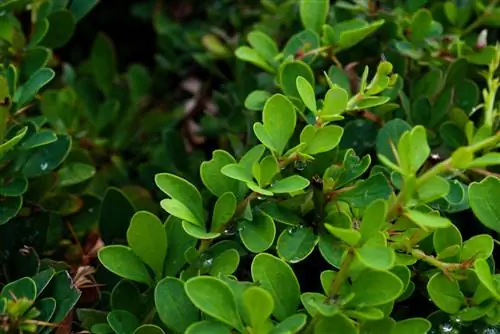- Author admin [email protected].
- Public 2023-12-16 16:46.
- Last modified 2025-01-23 11:20.
The dragon tree cannot be cultivated outdoors in Central Europe due to its rather warm temperature requirements, but it is one of the most popular houseplants. Depending on the botanical classification of certain subspecies, the group of dragon trees includes between around 50 and 150 subspecies, although strictly speaking these asparagus plants are not trees at all.

Which types of dragon tree are particularly suitable for the apartment?
The most common dragon tree species for the home are Dracaena fragrans (fragrant, shiny green leaves), Dracaena draco (Canary dragon tree, sword-shaped leaves with reddish edges), Dracaena deremensis (striped, broad leaves), Dracaena marginata (insensitive, dark green leaves with reddish edges) and Dracaena surculosa (clusty growth, mottled leaves).
Differences between different types of dragon tree
In specialist plant shops, some standard varieties are usually offered as potted specimens for the home, all of which are characterized by relatively compact growth. Overall, the differences between dragon tree species lie primarily in the following areas:
- Light tolerance
- Shape and size of the leaves
- Formation of flowers
- Tolerance of cooler temperatures
- Color drawing of leaves
The dragon trees that bear leaves all year round are not only available with fresh green leaves, but also with brightly edged or reddish leaves. It should be noted that dragon trees with little green in their leaves can tolerate more direct sunlight than green-leaved varieties. This is due to the different chlorophyll content of the leaves.
Dracaena fragrans
Dracaena fragrans is a very commonly cultivated dragon tree species. This subspecies is also characterized by the fact that even comparatively young plants can produce intensely fragrant flowers if the right care conditions are met. Dracaena fragrans has glossy, green leaves and is often sold hydroponically.
Dracaena draco
This dragon tree is also known as the “Canarian dragon tree” due to its natural distribution area. The sword-shaped leaves have a reddish edge and initially grow upright before slowly sloping downwards. Without pruning, this species reaches a height of around 160 centimeters indoors.
Dracaena deremensis
The various cultivars of Dracaena deremensis all have different green leaves striped with white parts. They are characterized by particularly wide and rather short leaves, resulting in particularly aesthetic leaf rosettes.
Dracaena marginata
The frequently offered Dracaena marginata is particularly resistant to care errors. The dark green leaves of this dragon tree species, which grow up to 200 centimeters high, have a reddish border and fluctuating temperature and light conditions are tolerated relatively well.
Dracaena surculosa
This subspecies of the dragon tree is not that easy to recognize as such at first glance. Finally, the clump-like growth of the rather thin plant stalks is more reminiscent of a type of bamboo than of other varieties of the dragon tree. This plant species comes from tropical Africa and requires temperatures of at least 15 degrees Celsius all year round. The leaves, which have varying degrees of mottled patterns, are relatively wide and fresh green when they shoot, later becoming slightly darker. This dragon tree can be propagated not only by cuttings, but also by division when repotting.
Tip
Just create a small, easy-care subtropical “forest” in your room by placing different types of dragon trees close together in pots. However, make sure that the location is protected from cool drafts, dry heating air and strong, direct sunlight, if possible all year round.






